
Michigan Avenue Streetscape
Chicago, Illinois 20 Years of Magnificent Mile Blooms
Photo Credit: Steven Gierke
Media: Please submit high-resolution image requests to images@asla.org.
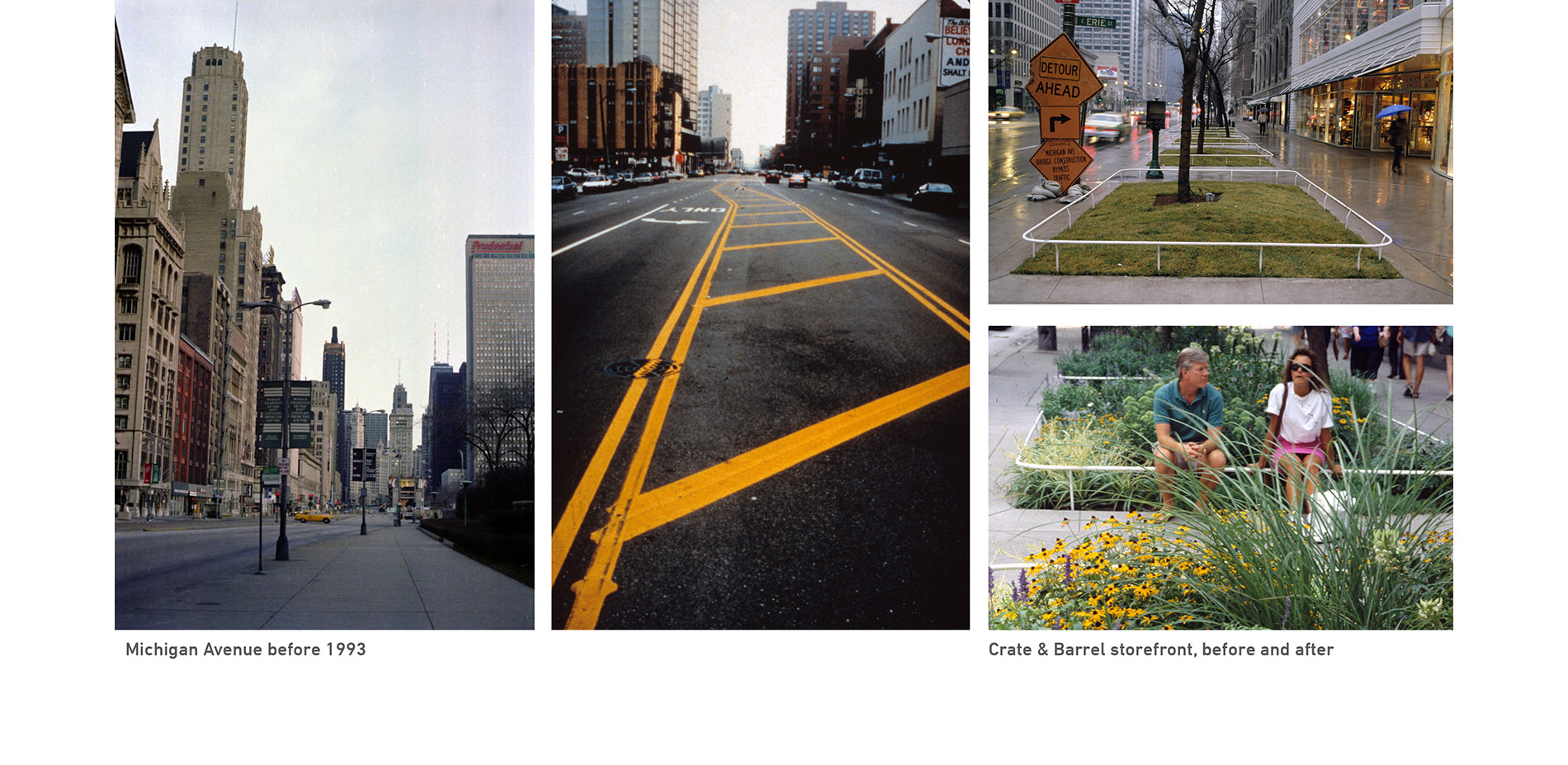
Marketed as Magnificent, Bleak in Reality
Prior to 1993, Michigan Avenue lacked unified landscape design. However, in 1991 Crate & Barrel planted four, 12-foot by 14-foot boxes in front of their store that caught Mayor Richard M. Daley’s attention. He called Crate & Barrel Founder Gordon Segal to develop a plan to landscape Michigan Avenue with similar planters.
Photo Credit: Left-side: Hoerr Schaudt, middle: Drew Becher, top-right: Hoerr Schaudt, bottom-right: Judith Bromley
Media: Please submit high-resolution image requests to images@asla.org.

A Bold, Beautiful Plan
In 1992, Mayor Daley proposed a 20-year plan to beautify Michigan Ave. The City of Chicago would fund the initial median planters. Retailers and property owners on North Michigan Avenue would donate $200,000 per year for 20 years for maintenance.
Photo Credit: Hoerr Schaudt
Media: Please submit high-resolution image requests to images@asla.org.

1993: The First Year
The first planters were installed in 1993. Displays would be changed out in Spring, Summer, and Fall to add seasonally appropriate interest and vibrance to Michigan Aveune.
Photo Credit: Hoerr Schaudt
Media: Please submit high-resolution image requests to images@asla.org.

Gorgeous Plants in Simple Planters
Straightforward concrete planters were built to house the median landscapes. They protect the plants from excessive sun, traffic damage, and pollutants like road salt without costing large amounts of money for structural upkeep. They vary in size up and down the street to provide interest and comply with the design of the street grid.
Photo Credit: Ron Schramm
Media: Please submit high-resolution image requests to images@asla.org.

Tulips in the Spring
Every Thanksgiving, 110,000 Tulips and 80,000 Muscari bulbs are planted for the Spring display, which comes up in March and lasts through June. Varietals vary each year. A layer of sod shelters the bulbs during the cold months.
Photo Credit: Steven Gierke
Media: Please submit high-resolution image requests to images@asla.org.
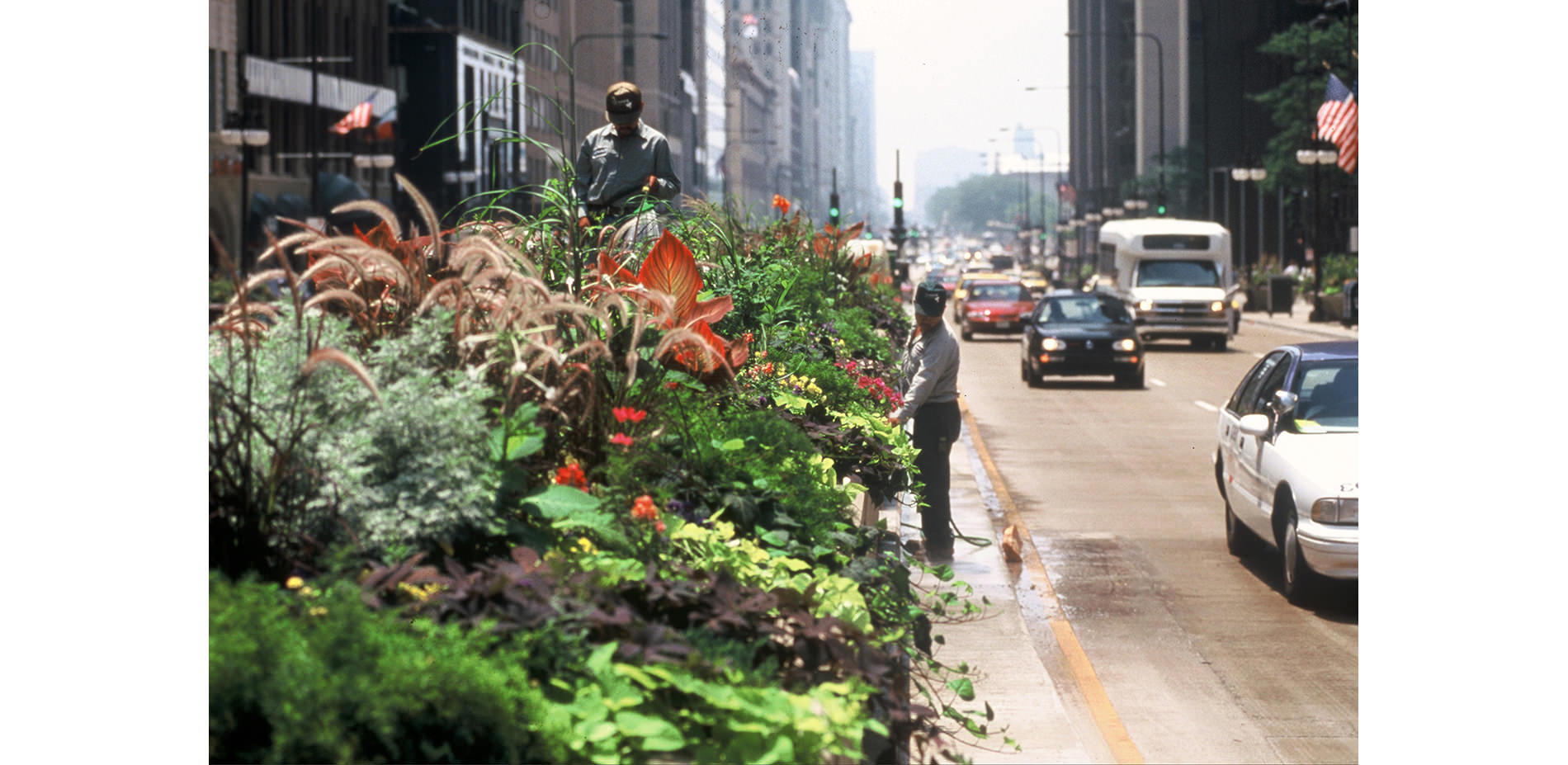
Variety in Summer & Fall
Plantings vary in Summer (planted June - September) and Fall (planted September - November). In the early years—like 1996, pictured here—selections tended toward native Midwestern plants. Full bloom heights and densities are considered for each planter so that traffic is left unobstructed.
Photo Credit: Hoerr Schaudt
Media: Please submit high-resolution image requests to images@asla.org.
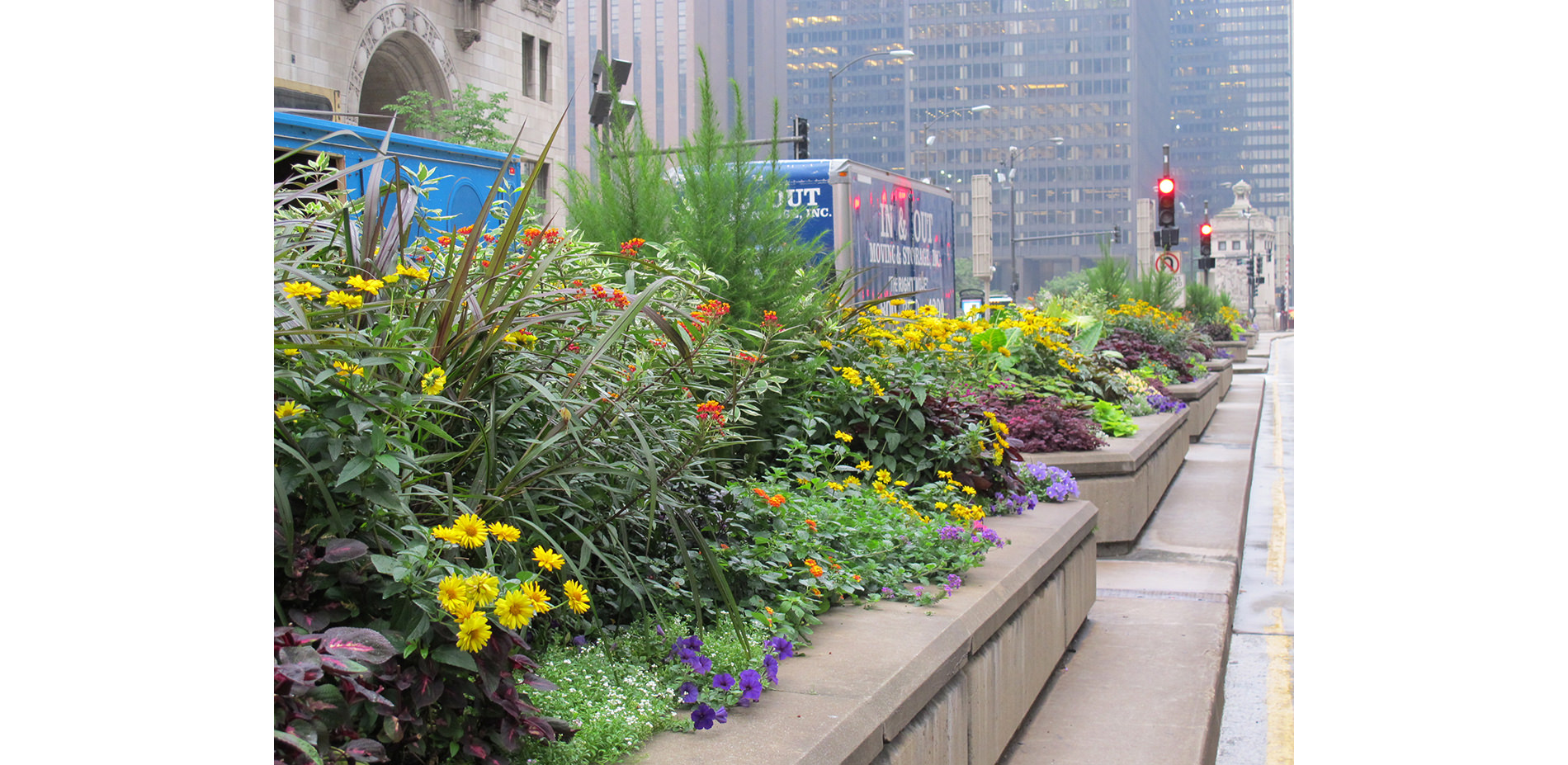
Layered Planting, Smart Growth
The plants are installed in layers. Structural plants go in first, then an infill layer—the plants that typically spill over the planters—and finally a layer of more delicate flowers and fillers. If one plant dies, an adjacent plant will grow into its place, minimizing holes and requiring very little maintenance.
Photo Credit: Scott Shigley
Media: Please submit high-resolution image requests to images@asla.org.
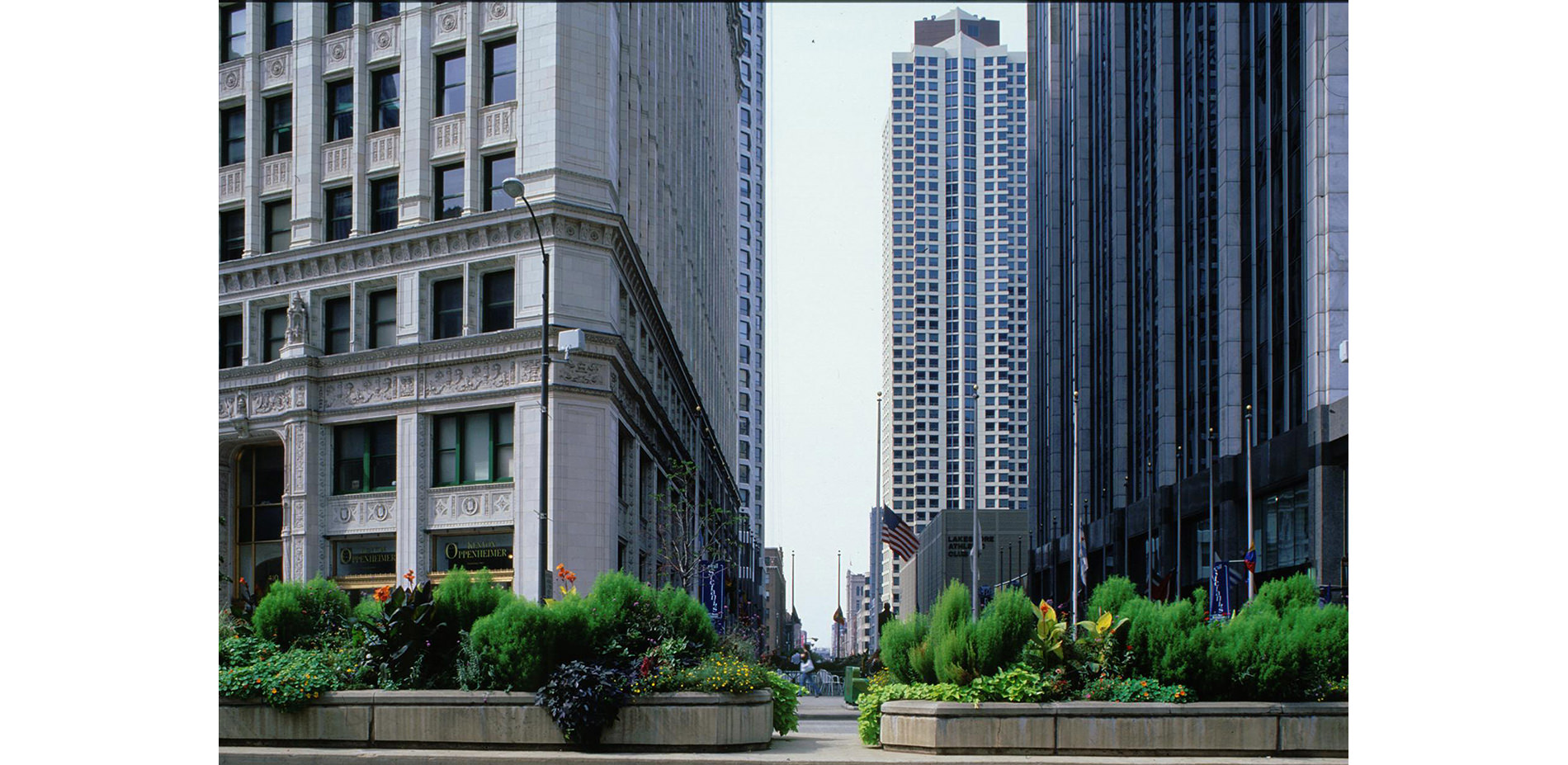
Changing Style Over 60 Planting Designs
The basic layered technique has remained consitent across the years, but the chosen plants have not. Contemporary designs weave together many plants not found in the Midwest to bring something new to Chicago’s landscape. The design team often consulted with retail planners so that colors and styles coordinated with window design trends along Michigan Avenue.
Photo Credit: Judith Bromley
Media: Please submit high-resolution image requests to images@asla.org.
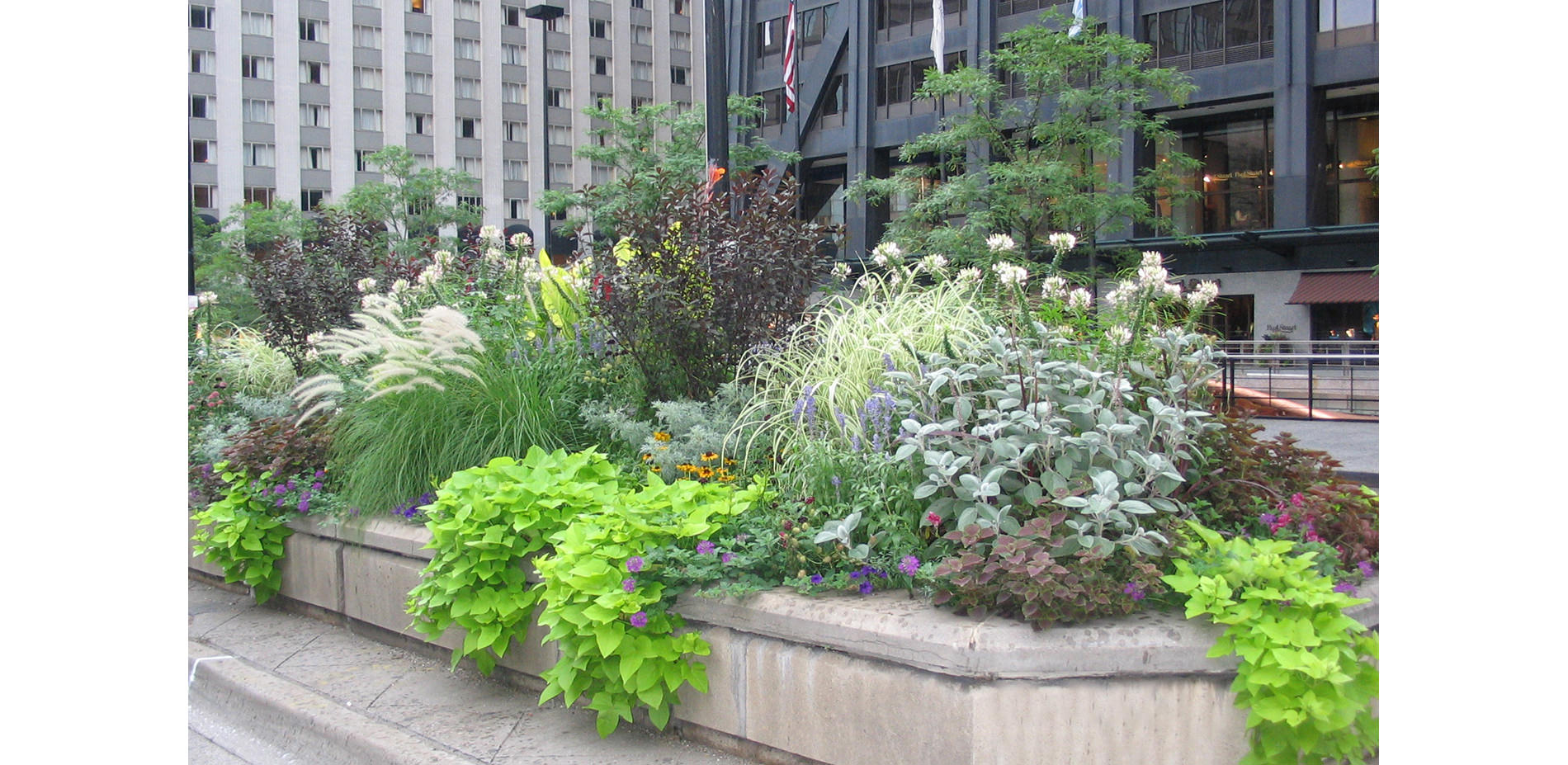
Reaching New Heights
Small trees and tall grasses often account for many of the 40,000 plants installed in the Summer. The trees are planted in beds that won’t obstruct traffic or block views to prominent Michigan Avenue retail windows.
Photo Credit: Steven Gierke
Media: Please submit high-resolution image requests to images@asla.org.

Greening Up South Michigan
Unlike on North Michigan Avenue, which is privately funded by retailers, the City of Chicago funds the median landscape south of the Chicago River. On average, it costs $20.40 per square foot for three plant rotations per year.
Photo Credit: Henriquez Studio
Media: Please submit high-resolution image requests to images@asla.org.
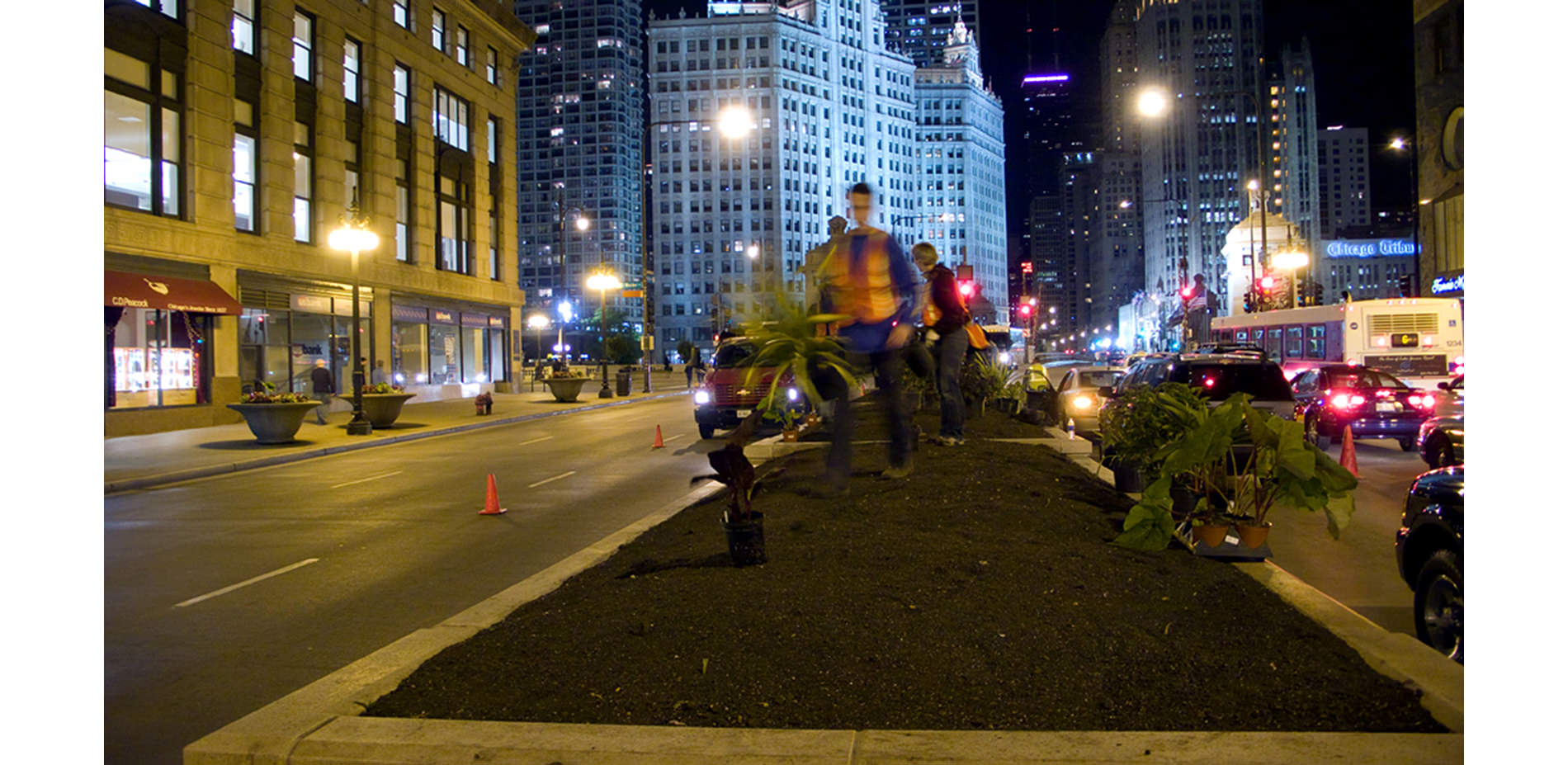
Transformation Overnight
Work happens overnight when it’s time to switch displays. The design team works side-by-side with a team of consultants to place and plant the new flowers, trees, and grasses. The night work typically takes a full week to plant the 87,000 SF spread across 80 planters.
Photo Credit: Scott Shigley
Media: Please submit high-resolution image requests to images@asla.org.
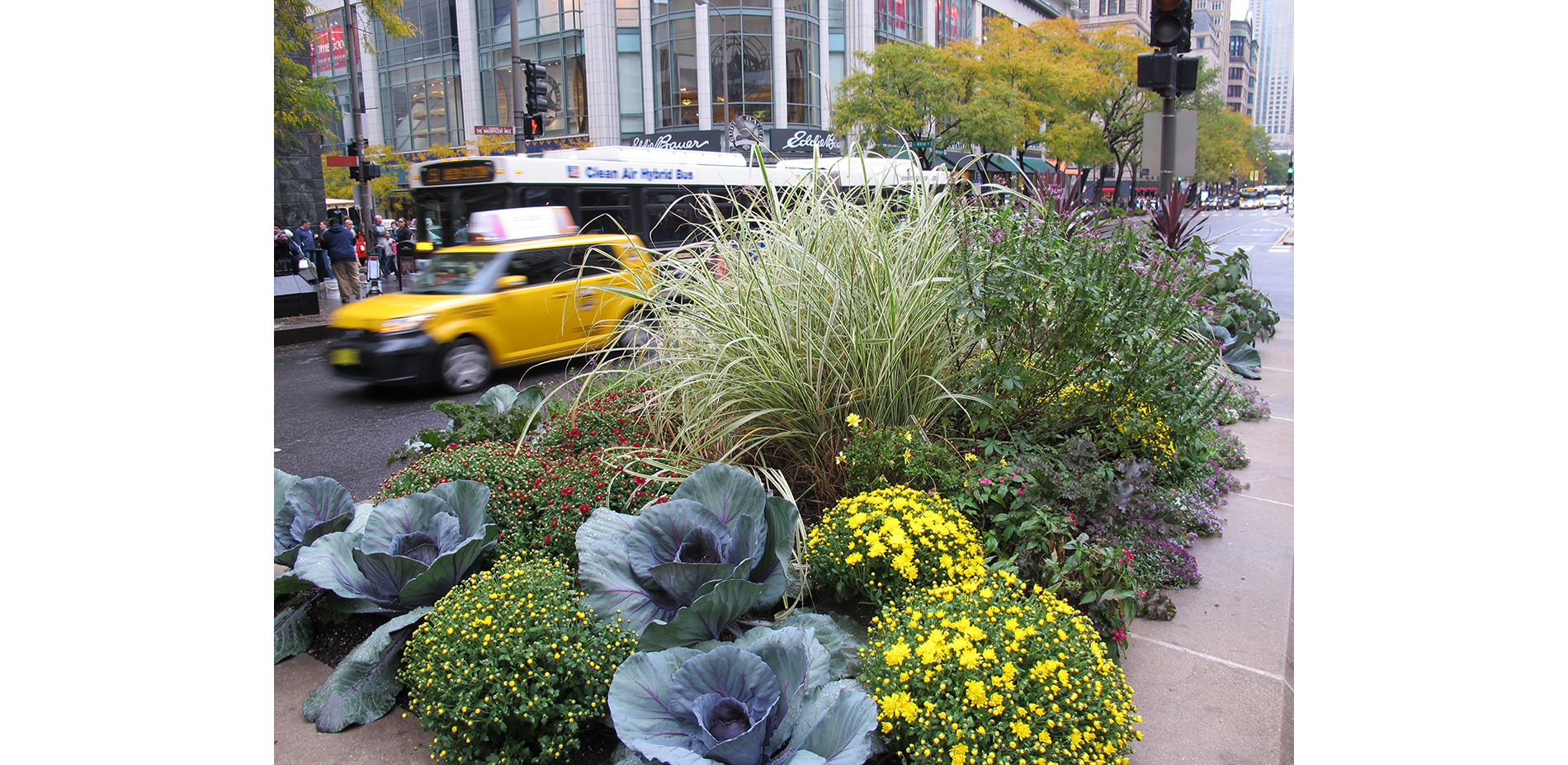
Deep Color & Texture in the Fall
15,000 individual plants are installed each Fall. Some plants carry over from the Summer beds; ripped-up material is donated to conservatories or replanted, when possible. Fall still favors big shapes and bold colors. A palette that is too cool or subtle wouldn’t make a big enough impact on the busy street.
Photo Credit: Steven Gierke
Media: Please submit high-resolution image requests to images@asla.org.
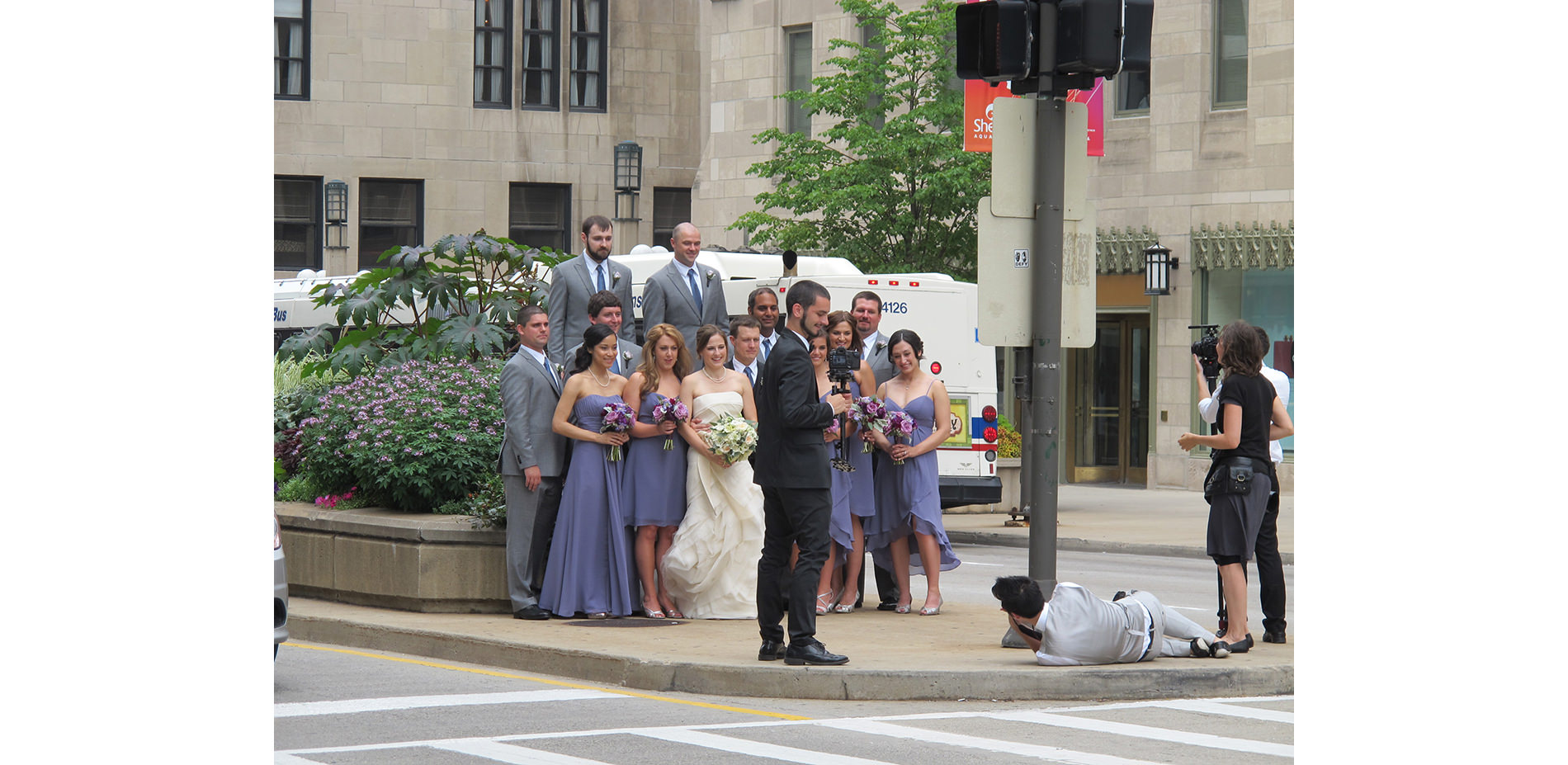
A Popular Photo-Op Stop
Throughout the year, many people stop to take photos in front of the planters.
Photo Credit: Steven Gierke
Media: Please submit high-resolution image requests to images@asla.org.

This design vision took Michigan Avenue places we never imagined by applying adventurous design to a gritty, urban environment. And the results of this vision are enormous. The Michigan Avenue medians synthesize natural, commercial, and architectural elements so dynamically that cities all across the country want to copy it.” —Gordon Segal, Crate & Barrel Founder
Photo Credit: Scott Shigley
Media: Please submit high-resolution image requests to images@asla.org.


















